MAPMAKER 2.0 - caterpillar, hemp and moth seed mix (NEW!)
950 Ft - 8.000 Ft
Butterfly Lure 2.0 is a seed mix for caterpillars, moths and sedges, the result of 1 year of research, which has resulted in a seed mix of the best nectar-producing and nutritious plant species. The majority of moths and sedges are very picky when they are caterpillars and have only a few or only 1 or 1 species of food plant: this is the plant on which the moth lays its eggs and the leaves of this plant are eaten by the caterpillars. Two of our protected butterflies, for example, are the striped butterfly, which only and exclusively oviposits on buttercup, and the large-spotted ant butterfly, which only lays its eggs on thyme and pitchgrass.
As their natural habitat decreases, there are fewer and fewer of these food plants, leading to a decline in the number of butterflies. This is particularly a problem for very specialist species, which starve rather than feed on other plants, and their numbers are therefore on a downward trend. For this reason, it would be important to focus on these food plants (which are in all cases native Hungarian species) when we want to support the species richness of native butterflies in our gardens.
They are less picky when they are mature, so any source of nectar will do, and of course there are favourites. We have also selected some of these good nectar-producing species for the mix, for example, the devil's-eye species, imola are always irresistible to moths. And because they are my personal favourites, we also paid extra attention to the food plants for sedges.
The Butterfly Lure 2.0 seed mix differs from the first edition of the Butterfly Lure seed mix in that, after some thought, Butterfly Lure 2.0 finally includes some proven super nectar-producing and butterfly attracting species that are not native to Europe, but are also not invasive: butterfly blossom, bumblebee rose and umbrella verbena. These species are also advantageous because they flower in their first year, whereas most perennials tend to set their petals from their second year onwards, but their leaves can be useful to caterpillars in their first year.
With the Butterfly Lure Seed Mix, which is also rich in food plants, remember that there is no butterfly without a caterpillar and let the little caterpillars eat up some plants, because that is what helps the most 🙂 The mix contains 150 butterfly and hemp food plants in addition to nectar sources!
Features:
- life cycle: annual, biennial, perennial
- flowering period: march-october
- size: 10-100 cm
- soil: dry, average
- growing area: sunny
- pollination factor: 10/10
The following species are included:
anise, buttercup, chickweed, white testicle, white meadowsweet, bladderwort, sheep sorrel, dill, garden milkweed, garden devil's-eye colour mix, colonic fanwort, common knapweed, common galah/deep sorrel, spearwort, bachelor's rose colour mix, lily of the valley sage, field spurge, musk sorrel, medical sorrel, buttercup, meadow imola, meadow cuckoo-grass, meadow marigold, meadow marigold, hornwort, hairy vetch, pitchgrass, spotted knapweed, bluebell snakeweed, wild meadow grass, ironbelted imola, red testicle
Recommended application rate: 2-3 g/nm
For more details and sowing suggestions, scroll down.
Price:
1g - 950 Ft
5g -2500 Ft
10g - 4000 Ft
25g - 8000 Ft
Prices are gross prices, 27% VAT included.
Description
Butterfly Lure 2.0 is a seed mix for caterpillars, moths and sedges, the result of 1 year of research, which has resulted in a seed mix of the best nectar-producing and nutritious plant species. The majority of moths and sedges are very picky when they are caterpillars and have only a few or only 1 or 1 species of food plant: this is the plant on which the moth lays its eggs and the leaves of this plant are eaten by the caterpillars. Two of our protected butterflies, for example, are the striped butterfly, which only and exclusively oviposits on buttercup, and the large-spotted ant butterfly, which only lays its eggs on thyme and pitchgrass.
As their natural habitat decreases, there are fewer and fewer of these food plants, leading to a decline in the number of butterflies. This is particularly a problem for very specialist species, which starve rather than feed on other plants, and their numbers are therefore on a downward trend. For this reason, it would be important to focus on these food plants (which are in all cases native Hungarian species) when we want to support the species richness of native butterflies in our gardens.
They are less picky when they are mature, so any source of nectar will do, and of course there are favourites. We have also selected some of these good nectar-producing species for the mix, for example, the devil's-eye species, imola are always irresistible to moths. And because they are my personal favourites, we also paid extra attention to the food plants for sedges.
The Butterfly Lure 2.0 seed mix differs from the first edition of the Butterfly Lure seed mix in that, after some thought, Butterfly Lure 2.0 finally includes some proven super nectar-producing and butterfly attracting species that are not native to Europe, but are also not invasive: butterfly blossom, bumblebee rose and umbrella verbena. These species are also advantageous because they flower in their first year, whereas most perennials tend to set their petals from their second year onwards, but their leaves can be useful to caterpillars in their first year.
With the Butterfly Lure Seed Mix, which is also rich in food plants, remember that there is no butterfly without a caterpillar and let the little caterpillars eat up some plants, because that is what helps the most 🙂 The mix contains 150 butterfly and hemp food plants in addition to nectar sources!
Features:
- life cycle: annual, biennial, perennial
- flowering period: march-october
- size: 10-100 cm
- soil: dry, average
- growing area: sunny
- pollination factor: 10/10
The following species are included:
| Hungarian name | Latin name | % |
| Anise | Pimpinella anisum | 3.2 |
| Baltacim | Onobrychis viciifolia | 6.5 |
| Chickweed | Sanguisorba minor | 1.6 |
| Umbrella verb | Verbena bonariensis | 2.4 |
| White beeflower | Melandrium album | 3.2 |
| White clover | Trifolium repens | 3.2 |
| Sheep soup | Rumex acetosellosa | 0.5 |
| Kapor | Anethum graveolens | 3.2 |
| Garden foam grass | Silene armeria | 4.9 |
| Colonial fanwort | Filipendula vulgaris | 3.2 |
| Common kitten tail | Achillea millefolium | 2.4 |
| Common Galay | Galium mollugo | 4.9 |
| Spearhead plantain | Plantago lanceolata | 2.4 |
| Legion Rose | Zinnia elegans Mix | 6.5 |
| Ligeti sage | Salvia nemorosa | 4.9 |
| Mezei magpie's foot | Consolida regalis | 4.9 |
| Nutmeg tide | Salvia sclarea | 2.4 |
| I'm dying | Scabiosa atropurpurea | 3.2 |
| Medical spray | Melilotus officinalis | 2.4 |
| Buttercup | Cosmos bipinnatus | 8.1 |
| Rèti imola | Centaurea jacea | 2.4 |
| Radish thyme | Lychnis flos-cuculi | 1.6 |
| Daisy of Rete | Leucanthemum vulgare | 3.2 |
| Deer herd | Lotus corniculatus | 4.9 |
| Blond Bükkköny | Vicia villosa | 1.6 |
| Pitch grass | Origanum vulgare | 3.2 |
| Bright corona horn | Securigera varia | 2.4 |
| Blonde snakehead | Echium vulgare | 3.2 |
| Iron-clad imola | Centaurea scabiosa | 1.6 |
| Red clover | Trifolium pratense | 1.6 |
Vetting advice:
They can only be sown on prepared land that has been previously cleared of weeds. They will not germinate when sown in grass or will be overwhelmed by grass over time. Sow the seeds on the surface of the free soil, which has been raked to a dust mound. You can mix the seeds with a bit of sand: it makes it easier to spread evenly and makes it easier to see where the seeds have been. They should not be buried, as many seeds will germinate in the light, and you can at most drag one of them with the rake, but this step can be omitted. If your garden soil is not of very good quality, you can spread half an inch or so of compost or potting soil on top and sow the seeds on that. Then you can either roll them in for larger areas or walk over them for smaller areas to make sure the seeds are in good contact with the soil (check the soles of your shoes to make sure there are not too many seeds left :)) Then it is important to keep the soil moist but not wet during germination (3-4 weeks!). When sowing in autumn, it is advisable to water both in autumn and spring. Do not water at the highest watering intensity to avoid washing the seeds away from the area. In dry, warm weather, keeping the soil moist may mean watering several times a day!
Caring for the area:
Mature plants are usually drought tolerant, but in the event of a severe drought they will appreciate 1-2 waterings per month. In the first year, annual species flower, and from the second year onwards, biennials and perennials join the flowering, but they only grow green the first year. The area really comes together and becomes more spectacular from the second year onwards, but in return the perennials flower and bush up every year from then on and don't need to be resown. Be patient, it's worth it! 🙂 In the first year, soil preparation can also bring to the surface any annual weed seeds that are in the ground. These should be removed the first year, but by the second year the vegetation will have coalesced and will be pushed out. This is less common in autumn sowing. Mowing/mowing the area once a year in late autumn or early spring is sufficient. We wish your seeds a good germination!
Recommended sowing rate: 2-3 grams/m²
Food plants and butterfly species in the mixture
(source: https://jasius.hu/lepidopterology/)
Anise: |
| Frankincense-rock-owl |
| two-waved screech owl |
Baltacim: |
| Callophrys rubi - Green-braided buttercup |
| Cupido osiris - mountain dwarf buttercup |
| Euclidia triquetra - Thyme-flowered burrowing owl |
| Pyrrhia umbra - iglicebag owl |
| Ammoconia caecimacula - grey grey owl |
| Colias erate - Eastern sulphur butterfly |
| Issoria lathonia - common guinea fritillary |
| Colias croceus - saffron-coloured sandfly |
Chabaíre bloodroot: |
| Brenthis daphne - raspberry hairstreak |
| Spialia sertorius - western dwarf bush-leaved sedge |
| Spialia orbifer - round-spotted dwarf bush-leaved sedge |
White here/Red here: |
| Callophrys rubi - Green-braided buttercup |
| Xylena exsoleta - grey wood owl |
| Orthosia opima - pointed barred owl |
| Lacanobia suasa - spotted spotted owl |
| Nola aerugula - brown-striped fescue |
| Orthosia gracilis - slender barred owl |
| Euclidia mi - Clover-eared owl |
| Colias erate - Eastern sulphur butterfly |
| Polyommatus dorylas - Field buttercup |
| Spilosoma lubricipedum - cream bear |
| Diacrisia sannio - red-edged bear's-foot trefoil |
| Xylena vetusta - red woodlice |
| Euclidia glyphica - common day owl |
| Cyaniris semiargus - Small-eyed buttercup |
| Ceramica pisi - Pea Owl |
| Diaphora mendica - half-eyed bear's-foot trefoil |
| Leptidea sinapis - small mustard sprout |
| Plebejus idas - Northern buttercup |
| Plebejus argus - silvery buttercup |
| Cupido alcetas - slate blue buttercup |
| Colias croceus - saffron-coloured sandfly |
| Cupido argiades - stray buttercup |
| Plebejus argyrognomon - Ink-blue buttercup |
| Colias hyale - faded sulphur butterfly |
| Polyommatus coridon - silvery blue buttercup |
Devil's eyes: |
| Calophasia opalina - spotted white owl |
| Nola chlamitulalis - a magnificent pubic loosestrife |
| Hemaris tityus - Hoover tender |
| Omphalophana antirrhinii - lion-mouthed eagle owl |
| Hyles livornica - banded hemp |
| Epimecia ustula - devil's-eye robin |
Foam needles: |
| Hoplodrina blanda - dark brown screech owl |
| Polymixis rufocincta isolata - Fork-tailed winter owl |
| Cucullia artemisiae - black screech owl |
| Hadena compta - spotted barn owl |
| Heliothis ononis - Sage Owl |
| Ammoconia caecimacula - grey grey owl |
| Agrochola litura - variegated grey owl |
| Hadena filograna - dark-spotted barn owl |
| Hadena confusa - white-spotted barn owl |
| Antitype chi - white autumn owl |
| Hadena magnolii - white-spotted barn owl |
| Parasemia plantaginis - Plantain-bearing orchid |
| Conisania luteago - yellowish spotted owl |
| Hadena perplexa - olive-brown spotted owl |
| Sideridis reticulata - whitish spotted owl |
| Hyssia cavernosa - black-charactered meadow owl |
|
Hadena bicruris/capsincola - grey barn owl/grey ...
|
Maple sauce: |
| Arctia festiva - ornate bear's-foot trefoil |
| Amata phegea - white-spotted mockingbird |
| Acronicta euphorbiae - dog milk-owl |
| Hoplodrina superstes - spotted screech owl |
| Hoplodrina respersa - double-winged screech owl |
| Xanthia ocellaris - grey mud dove |
| Hoplodrina blanda - dark brown screech owl |
| Hoplodrina octogenaria - Grey Screech Owl |
| Hyphoraia aulica - brown bearberry |
| Hepialus humuli - large rootworm |
| Mormo maura - mourning owl |
| Dypterygia scabriuscula - screech owl |
| Phymatopus hecta - Golden Rootworts |
| Simyra albovenosa - swamp spotted owl |
| Spilosoma urticae - snow-coloured bearfly |
| Lacanobia suasa - spotted spotted owl |
| Ammoconia caecimacula - grey grey owl |
| Agrochola litura - variegated grey owl |
| Agrius convolvuli - River Hemp |
| Euclidia mi - Clover-eared owl |
| Aporophyla lutulenta - spotted grey owl |
| Spilarctia lutea - yellowish bear |
| Xylena exsoleta - grey wood owl |
| Lycaena virgaureae - golden firefly |
| Parasemia plantaginis - Plantain-bearing orchid |
| Trachea atriplicis - summer green owl |
| Antitype chi - white autumn owl |
| Hyles livornica - banded hemp |
| Lycaena dispar rutilus - large firefly |
| Hyles vespertilio - bat tender |
| Spilosoma lubricipedum - cream bear |
| Diaphora mendica - half-eyed bear's-foot trefoil |
| Euclidia glyphica - common day owl |
| Xylena vetusta - red woodlice |
| Polymixis xanthomista - yellow-necked turtle |
| Ceramica pisi - Pea Owl |
| Acronicta rumicis - solitary barn owl |
| Lycaena hippothoë - Hippothoë - firefly |
| Egira conspicillaris - variable grey owl |
| Conistra rubiginea - red winter owl |
| Lycaena thersamon - small firefly |
| Agrochola nitida - rusty brown grey owl |
| Lycaena phlaeas - common firefly |
| Lycaena tityrus - brown firefly |
| Lycaena tityrus - brown firefly |
Colonial fanwort: |
| Neptis rivularis - large white-banded butterfly |
| Brenthis daphne - raspberry hairstreak |
| Brenthis ino - marsh guinea fowl |
| Pyrgus malvae - small busalepke |
| Ammoconia caecimacula - grey grey owl |
| Orthosia gracilis - slender barred owl |
| Brenthis hecate - brown guinea fritillary |
| Malacosoma castrensis - dog milk thistles |
Ordinary cat's tail: |
| Arctia festiva - ornate bear's-foot trefoil |
| Acronicta euphorbiae - dog milk-owl |
| Hyphoraia aulica - brown bearberry |
| Cucullia chamomillae - barn owl |
| Chelis maculosa - spotted bearberry |
| Watsonarctia deserta - spotted bear |
| Pachetra sagittigera - great crested newt |
| Orthosia gracilis - slender barred owl |
| Arctia villica - black bearberry |
| Cucullia tanaceti - barred hooded owl |
| Malacosoma castrensis - dog milk thistles |
| Conistra rubiginosa - grey winter owl |
| Ceramica pisi - Pea Owl |
| Common galay/extinguishing galay: |
| Amata phegea - white-spotted mockingbird |
| Hoplodrina superstes - spotted screech owl |
| Hippotion celerio - striped hemp |
| Diachrysia nadeja - spotted golden owl |
| Eriopygodes imbecilla - dandelion owl |
| Chelis maculosa - spotted bearberry |
| Hemaris tityus - Hoover tender |
| Watsonarctia deserta - spotted bear |
| Ammoconia caecimacula - grey grey owl |
| Orbona fragariae - giant winter owl |
| Rhyparia purpurata - purple bear's-foot trefoil |
| Hyles gallii - Gallia tender |
| Antitype chi - white autumn owl |
| Hyles livornica - banded hemp |
| Polia bombycina - pallid grey owl |
| Hyles vespertilio - bat tender |
| Diaphora mendica - half-eyed bear's-foot trefoil |
| Diacrisia sannio - red-edged bear's-foot trefoil |
| Conistra rubiginosa - grey winter owl |
| Ceramica pisi - Pea Owl |
| Agrochola nitida - rusty brown grey owl |
| Conistra erythrocephala - Red-headed Hawk Owl |
| Macroglossum stellatarum - ducktail hemp |
| Deilephila elpenor - grape hemp |
| Deilephila porcellus - red hemp |
| Epatolmis luctifera - gypsy marmoset |
Plantain with spear: |
| Amata phegea - white-spotted mockingbird |
| Arctia festiva - ornate bear's-foot trefoil |
| Acronicta euphorbiae - dog milk-owl |
| Hoplodrina superstes - spotted screech owl |
| Hoplodrina respersa - double-winged screech owl |
| Athetis pallustris - sooty barn owl |
| Athetis furvula - Sandy Owl |
| Melitaea cinxia - white-tailed kite |
| Charanyca trigrammica - three-barred grass owl |
| Hoplodrina blanda - dark brown screech owl |
| Athetis gluteosa - two-spotted screech owl |
| Hoplodrina octogenaria - Grey Screech Owl |
| Hyphoraia aulica - brown bearberry |
| Diachrysia nadeja - spotted golden owl |
| Hypena proboscidalis - Long-eared Scops Owl |
| Coscinia cribraria - spotted moth |
| Melitaea britomartis - brown woodlouse |
| Athetis hospes - Mediterranean silky-crested owl |
| Plusia festucae - silver-crowned owl |
| Ocnogyna parasita - stump-winged bearbird |
| Autographa bractea - spotted golden owl |
| Orbona fragariae - giant winter owl |
| Arctia villica - black bearberry |
| Spilarctia lutea - yellowish bear |
| Melitaea diamina - chequered cattail |
| Melitaea didyma - fiery moth |
| Parasemia plantaginis - Plantain-bearing orchid |
| Hyles gallii - Gallia tender |
| Lacanobia splendens - marsh burrowing owl |
| Melitaea phoebe - large marbled woodpecker |
| Spilosoma lubricipedum - cream bear |
| Dysauxes ancilla - glass-spotted mockingbird |
| Diaphora mendica - half-eyed bear's-foot trefoil |
| Diacrisia sannio - red-edged bear's-foot trefoil |
| Polymixis xanthomista - yellow-necked turtle |
| Acronicta rumicis - solitary barn owl |
| Tyta luctuosa - black day owl |
| Agrochola nitida - rusty brown grey owl |
| Conistra erythrocephala - Red-headed Hawk Owl |
| Epatolmis luctifera - gypsy marmoset |
| Melitaea athalia - common nuthatch |
| Spiris striata - striped moth |
Ligeti sage: |
| Diachrysia chryson - great spotted owl |
| Heliothis ononis - Sage Owl |
| Spiris striata - striped moth |
Bare crow's feet: |
| Periphanes delphinii - Cockroach |
| Polychrysia moneta - Broad-crested Golden Owl |
| Hecatera cappa - silky white garden owl |
Medical spray: |
| Polyommatus dorylas - Field buttercup |
| Lacanobia suasa - spotted spotted owl |
| Colias erate - Eastern sulphur butterfly |
| Leptotes pirithous - Southern buttercup |
| Euclidia mi - Clover-eared owl |
|
Pseudophilotes vicrama schiffermülleri - Small-eyed buttercup
|
| Cyaniris semiargus - Small-eyed buttercup |
| Colias croceus - saffron-coloured sandfly |
| Cupido minimus - dwarf butterfly |
| Plebejus argyrognomon - Ink-blue buttercup |
| Colias hyale - faded sulphur butterfly |
Imolae: |
| Eublemma parva - tiny peregrine falcon |
| Agrochola lychnidis - wheat flower vine borer |
| Arctia villica - black bearberry |
| Pyrgus carthami - great bushalepke |
| Macroglossum stellatarum - ducktail hemp |
| Melitaea athalia - common nuthatch |
Radish thyme: |
| Cucullia artemisiae - black screech owl |
| Hadena compta - spotted barn owl |
| Hadena confusa - white-spotted barn owl |
| Sideridis rivularis - red-spotted barn owl |
| Sideridis reticulata - whitish spotted owl |
| Conisania luteago - yellowish spotted owl |
| Hadena bicruris/capsincola - grey barn owl |
Deer antler: |
| Colias erate - Eastern sulphur butterfly |
| Nola aerugula - brown-striped fescue |
| Agrochola litura - variegated grey owl |
| Polyommatus daphnis - lace buttercup |
| Euclidia glyphica - common day owl |
| Leptidea sinapis - small mustard sprout |
| Plebejus argus - silvery buttercup |
| Cupido minimus - dwarf butterfly |
| Plebejus idas - Northern buttercup |
| Colias croceus - saffron-coloured sandfly |
| Polyommatus bellargus - sky blue buttercup |
| Erynnis tages - gypsy busalepke |
| Cupido argiades - stray buttercup |
| Colias hyale - faded sulphur butterfly |
Blond vetch: |
| Lygephila pastinum - common barred owl |
| Lygephila viciae - Faded Barred Owl |
| Orbona fragariae - giant winter owl |
| Lygephila lusoria - great barred owl |
| Lygephila procax - black screech owl |
| Agrochola litura - variegated grey owl |
| Euclidia mi - Clover-eared owl |
| Polyommatus amandus - glittering buttercup |
| Colias chrysotheme - dolomite sulphur butterfly |
| Lygephila craccae - Long-eared Owl |
| Cyaniris semiargus - Small-eyed buttercup |
| Lygephila ludicra - narrow-winged barn owl |
| Cupido alcetas - slate blue buttercup |
| Leptidea sinapis - small mustard sprout |
| Euclidia glyphica - common day owl |
| Colias croceus - saffron-coloured sandfly |
| Polyommatus bellargus - sky blue buttercup |
| Colias hyale - faded sulphur butterfly |
| Polyommatus coridon - silvery blue buttercup |
Pitch grass: |
| Maculinea arion - Large-spotted ant butterfly |
A bright corona horn: |
| Lygephila pastinum - common barred owl |
| Lygephila viciae - Faded Barred Owl |
| Lacanobia w-latinum - lattice worm |
| Lygephila procax - black screech owl |
| Agrochola litura - variegated grey owl |
| Polyommatus daphnis - lace buttercup |
|
Pseudophilotes vicrama schiffermülleri - Small-eyed buttercup
|
| Lygephila craccae - Long-eared Owl |
| Colias alfacariensis - southern alfacariensis |
| Leptidea sinapis - small mustard sprout |
| Cupido alcetas - slate blue buttercup |
| Cupido minimus - dwarf butterfly |
| Colias croceus - saffron-coloured sandfly |
| Polyommatus bellargus - sky blue buttercup |
| Erynnis tages - gypsy busalepke |
| Plebejus argyrognomon - Ink-blue buttercup |
| Colias hyale - faded sulphur butterfly |
| Polyommatus coridon - silvery blue buttercup |
Blonde snakehead: |
| Utetheisa pulchella - blood-spotted bear |
More information
| Mass | N/A |
|---|---|
| Quantity | |
| Lifecycle | |
| Species | |
| Demand for light | |
| Dispensing | |
| Special feature | ornamental plant, pollinator 10/10, butterfly attractant, Zita's favourite |
| Height | |
| Ancestry | |
| Colour | |
| Talaj | |
| Flowering month | |
| Water demand |
Only users who are logged in and have already purchased the product can write a review.
Related products
-
-
Select options
There are several variations of this product. The variants can be selected on the product page
- Add to wishlistAdd to wishlist
- 60 native European wild flowers, seed mix
ZÜMMÖGDE - beekeeping seed mix
- 950 Ft - 20.500 Ft
Add to wishlistAdd to wishlist -
Select options
There are several variations of this product. The variants can be selected on the product page
-
-
Select options
There are several variations of this product. The variants can be selected on the product page
- Add to wishlistAdd to wishlist
- bird attractant, seed mix
BIRD FOOD - seed mix for winter feeding of birds (prickly)
- 2.500 Ft - 13.000 Ft
Add to wishlistAdd to wishlist -
Select options
There are several variations of this product. The variants can be selected on the product page
-
-
Add to basket
- Add to wishlistAdd to wishlist
Add to wishlistAdd to wishlist -
Add to basket
-
Add to wishlistAdd to wishlist
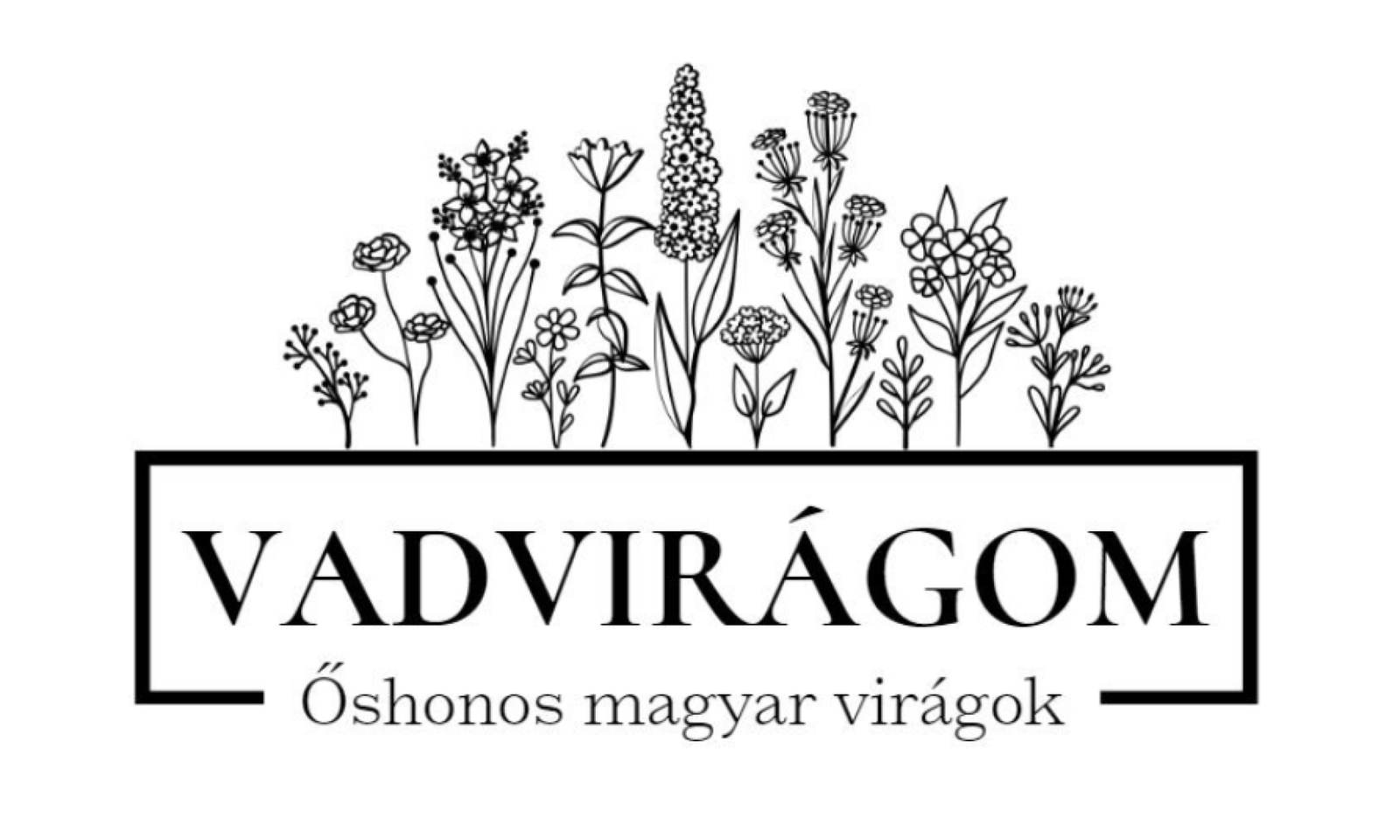

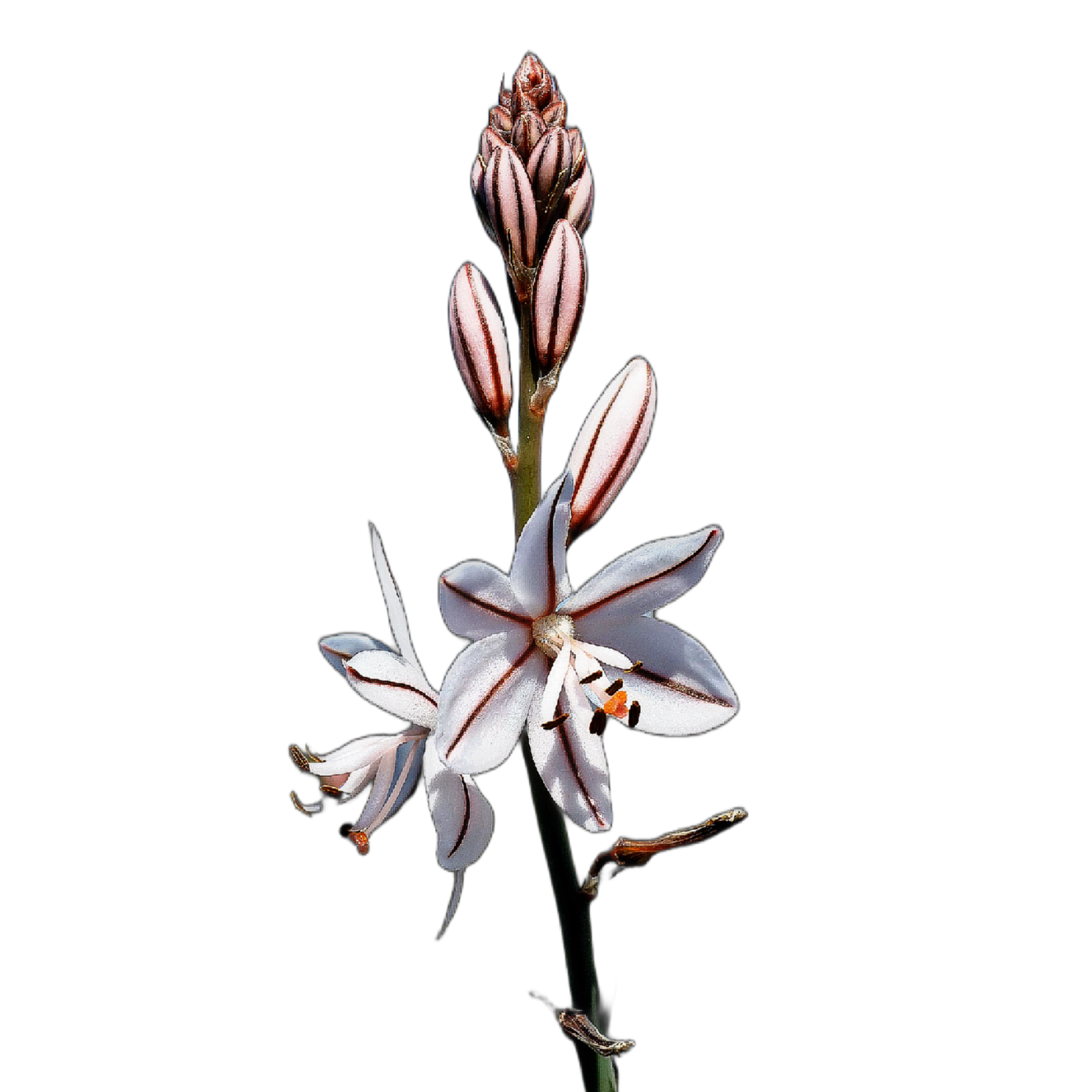
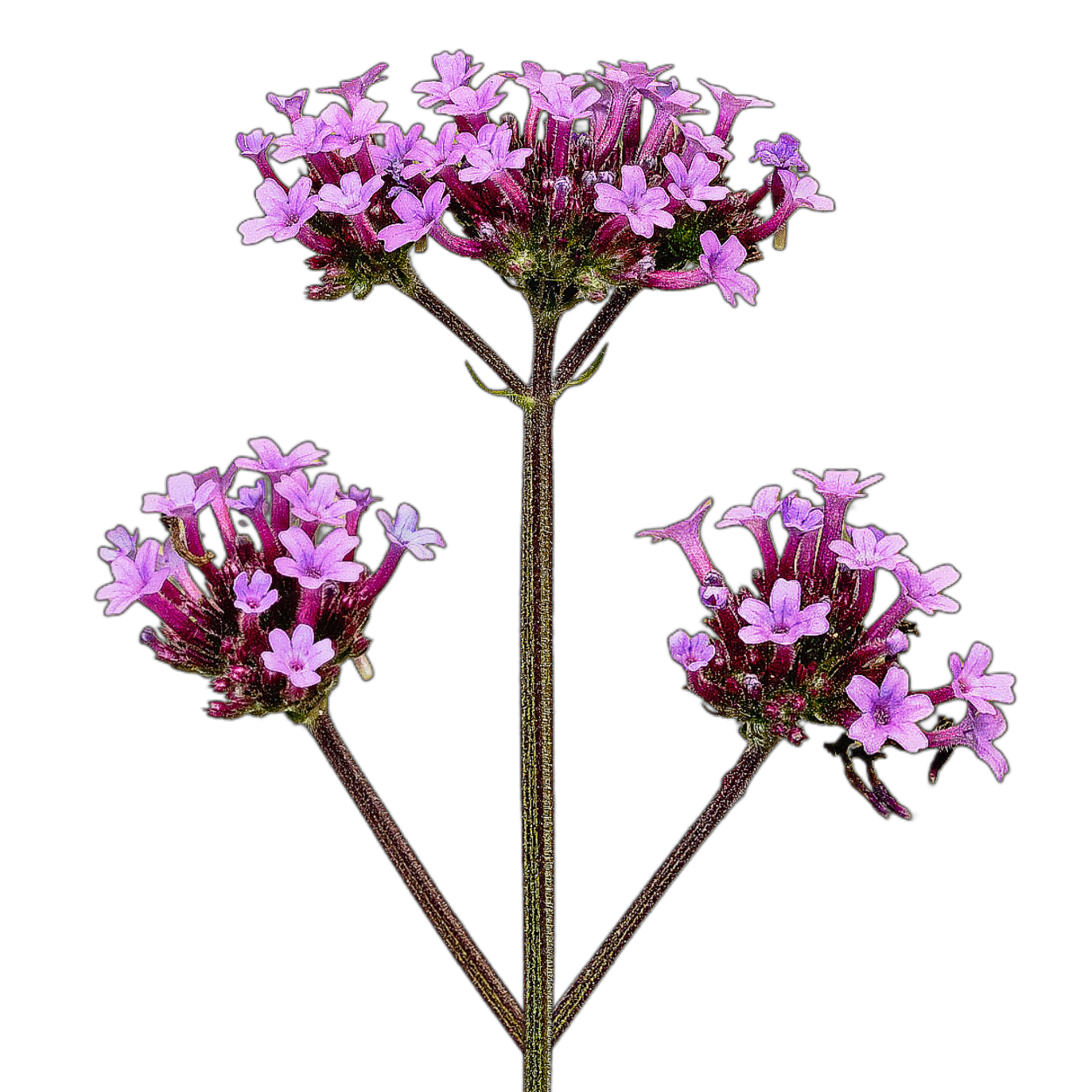
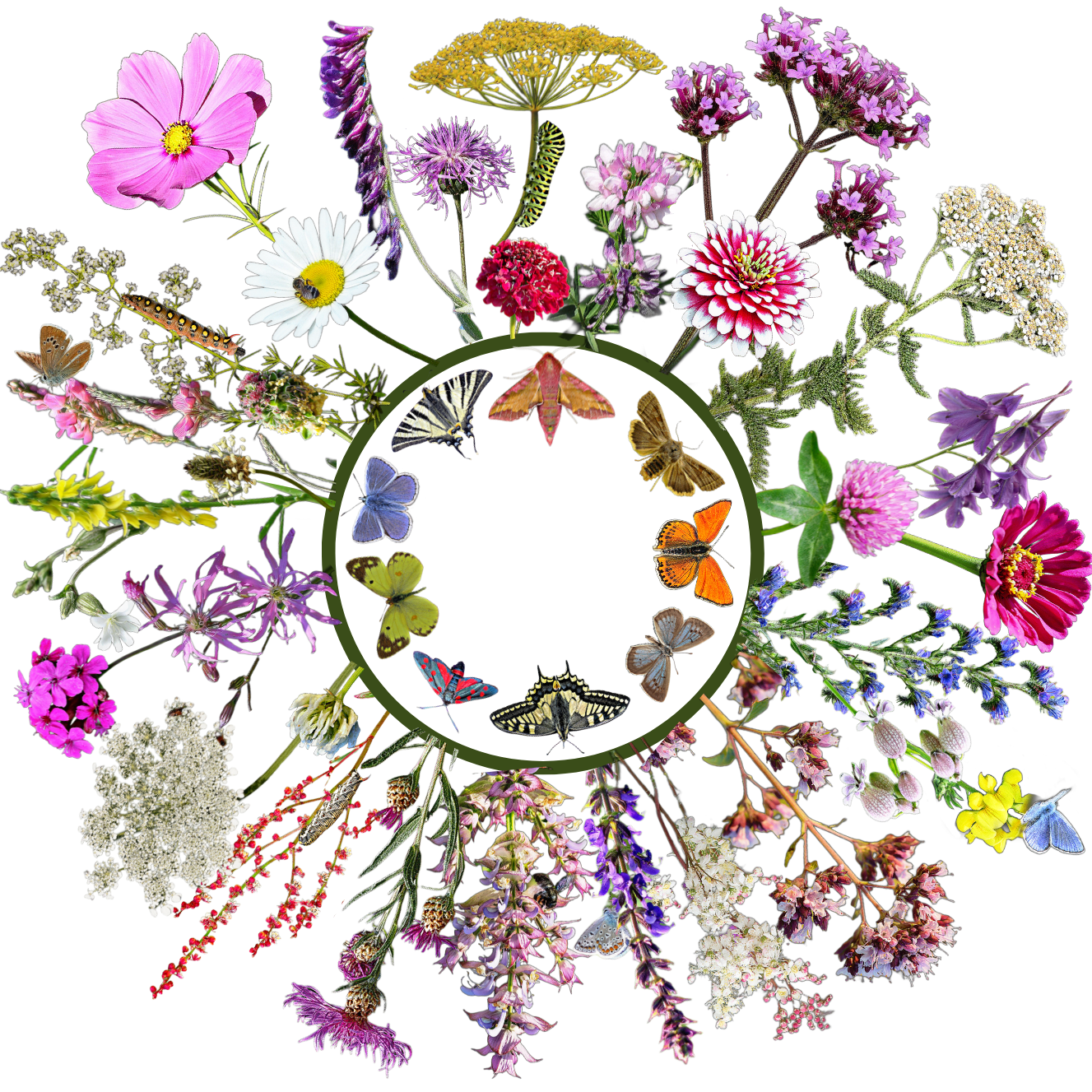

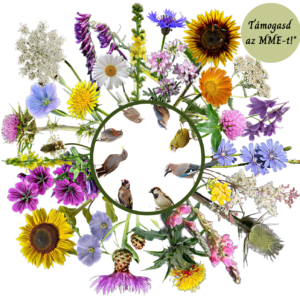
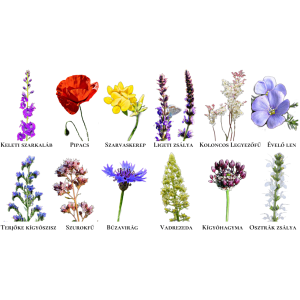
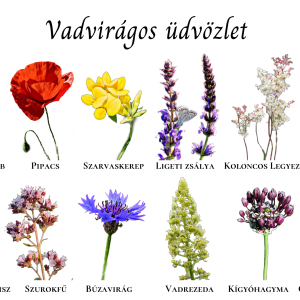
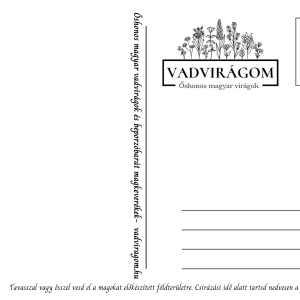
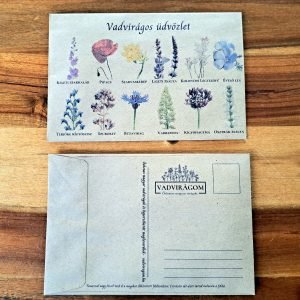
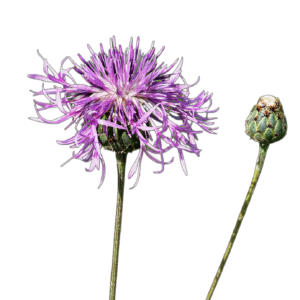
Reviews
No reviews yet.